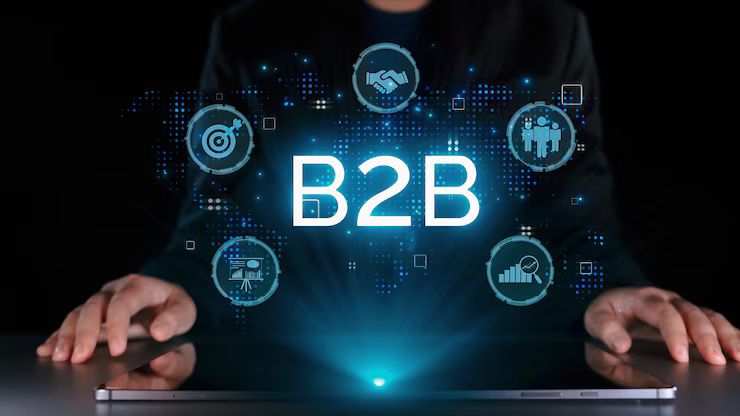B2B SaaS Products Businesses Should Invest in (2025 Guide)
B2B SaaS (Business-to-Business Software-as-a-Service) refers to cloud-based applications designed to help businesses improve workflows, automate tasks, and scale operations. Instead of installing software on individual systems, companies access these tools via the internet, typically on a subscription basis.
B2B SaaS solutions now power everything from customer relationship management to payroll, project collaboration, analytics, and customer support. These products allow businesses to reduce costs, enhance scalability, and focus more on core goals.

Why B2B SaaS Matters Today
B2B SaaS tools are central to digital transformation. In a competitive market, businesses are constantly seeking ways to:
-
Automate manual tasks
-
Reduce software maintenance costs
-
Access real-time data for decision-making
-
Collaborate effectively with remote or hybrid teams
-
Maintain scalability without investing in IT infrastructure
B2B SaaS solutions offer flexibility, regular updates, and cross-device compatibility. Whether you're a startup or an enterprise, these tools can help streamline operations and enhance customer experience.
Industries such as finance, marketing, HR, healthcare, and logistics all benefit from specialized SaaS platforms tailored to their unique needs.
Recent Trends in B2B SaaS (2024–2025)
-
AI and Automation Integration: Most SaaS products now embed AI tools for predictive analytics, intelligent routing, and personalized content generation.
-
Low-code/No-code Platforms: Empower non-developers to create business apps and workflows without coding.
-
API-First Design: SaaS platforms prioritize integration with other tools for a seamless ecosystem.
-
Cybersecurity Upgrades: Stronger security protocols and compliance features are becoming a core part of SaaS offerings.
-
Vertical SaaS Expansion: Tools are being designed for specific industries like legaltech, proptech, and edtech.
Notable in 2025 is the increase in SaaS spending among mid-sized businesses, with over 70% using at least five or more SaaS tools for daily operations.
Laws and Compliance That Affect SaaS Usage
Depending on your country and industry, using SaaS products may involve compliance with:
-
GDPR (EU) – Ensures data privacy and processing regulations.
-
CCPA (California, USA) – Protects consumer data and transparency.
-
ISO/IEC 27001 – International standard for information security management.
-
SOC 2 Compliance – Evaluates how well SaaS companies protect customer data.
Always ensure the B2B SaaS provider you choose is compliant with local and international data protection laws, especially if handling sensitive business or customer information.
Top B2B SaaS Products to Consider in 2025
Here’s a categorized list of recommended tools:
1. CRM and Sales Automation
-
Salesforce – Enterprise-grade CRM with AI tools for pipeline tracking.
-
HubSpot CRM – Popular with startups and SMBs for inbound marketing and automation.
-
Pipedrive – Intuitive for sales teams with visual funnel tracking.
2. Marketing and Email Automation
-
Mailchimp – Robust for email campaigns and audience segmentation.
-
ActiveCampaign – Combines email, automation, and sales pipelines.
-
Brevo (formerly Sendinblue) – Budget-friendly with SMS and marketing automation.
3. Project Management and Collaboration
-
Asana – Great for team collaboration, task management, and deadlines.
-
ClickUp – Combines docs, tasks, chat, and goals in one workspace.
-
Monday.com – Customizable project dashboards and visual workflows.
4. Data Analytics and Business Intelligence
-
Looker (by Google Cloud) – For embedded analytics and business intelligence.
-
Tableau – Visualizes business data for insights and trend spotting.
-
Zoho Analytics – Affordable data reporting and dashboards for SMBs.
5. Customer Support and Helpdesk
-
Zendesk – Helpdesk automation, ticketing, and chat for customer service.
-
Freshdesk – Omnichannel support tool with AI-based resolution.
-
Intercom – For real-time chat, onboarding, and customer engagement.
6. HR and Payroll
-
BambooHR – Employee self-service, time tracking, and performance tools.
-
Gusto – Combines HR, payroll, and compliance for US-based businesses.
-
Zoho People – A cloud HR software that’s scalable and flexible
Helpful Tools and Resources
-
G2 – Compare SaaS software based on verified reviews.
-
Capterra – Tool for comparing software by features, pricing, and ratings.
-
Product Hunt – Discover trending SaaS tools and new product launches.
-
SaaSOptics – For managing recurring billing, metrics, and finance.
-
Zapier – Connects multiple SaaS tools via automation workflows.
Frequently Asked Questions (FAQs)
1. What is the difference between B2B SaaS and B2C SaaS?
B2B SaaS targets business users and teams, offering tools for operations, sales, or support. B2C SaaS is consumer-facing (e.g., streaming, fitness apps).
2. Are B2B SaaS platforms secure?
Most reputable B2B SaaS providers comply with global standards like GDPR, SOC 2, and ISO 27001. Always check for encryption, uptime guarantees, and compliance details.
3. Do B2B SaaS tools require IT teams for setup?
Not always. Many modern tools are designed to be user-friendly and come with no-code or low-code setups. However, enterprise tools may require initial technical support.
4. What’s the average cost of a B2B SaaS product?
Costs vary. Some tools offer free tiers, while enterprise solutions can run from $30/month to $500/month depending on features and scale.
5. Can I integrate multiple B2B SaaS products?
Yes. Most modern SaaS products offer APIs or integration features with tools like Zapier, Integromat, or built-in options.
Final Thoughts
Investing in the right B2B SaaS products can dramatically improve your business efficiency, collaboration, and growth. The key is to select tools that align with your goals, are scalable, and integrate seamlessly with your existing workflows.
As the SaaS market evolves with AI, automation, and compliance demands, staying updated and agile with your tech stack is no longer optional—it’s essential.